
Creating Islands in Aquatic Ecosystems
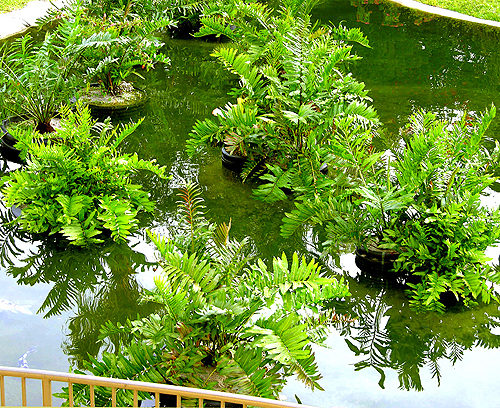
In most zoological exhibits or gardens, water is utilized as one of the main features or a focal point of the exhibit. This water feature can be an architectural element in the form of a waterfall, pond, or river and it may also be a habitat with fish, water birds, turtles, plants or some type of ecosystem. Almost always it is an expensive artificially constructed system with a liner and layers of concrete, shotcrete, and steel or a combination of these materials. The finished product is often an excellent replica of a natural system reflecting the geology of a specific area.
At times “value engineering” during the design process or simply because there wasn’t enough money in the budget, the finished product may be less then optimum from a design or a functional point of view. Perhaps an existing pool or river is being redesigned as a new exhibit and changes need to be made. With budgets always being tight, efficient and cost effective methods are desired.
At Parrot Jungle Island (PJI) there was a need to cover a percentage of the water because the intense direct sunlight causes the water to heat up and dense algae, both planktonic and filamentous, becomes a problem for the mechanical life support system to remove. It also got impossible to view the fish. The efficient way to control these algae was to cover or shade the water through the use of plants. However with fish and turtles in the water, floating plants were not a good option; they would end up as food for the inhabitants of the water.
During the construction of PJI (the park has been open for less than two years) I had the opportunity to work very closely with the site engineering subcontractor. This contractor did all of the site excavation and drainage work. One of the materials extensively used onsite for drainage was corrugated high density polyethylene pipe (HDPE) pipe. It was easily cut with a chain saw, very strong, and lightweight. When I was trying to come up with a solution for the installation of plants in our waterway, I remembered the HDPE pipe and did some research.
HDPE is the most chemically inert of all commodity plastic raw materials. Engineers have specified HDPE pipes for years in chemically active acidic or alkaline site conditions. “Corrugated polyethylene pipe is the preferred choice for installations that are subjected to acidic mine runoff, aggressive landfill leachate or strong acids with a pH as low as 2.0. Plastics withstand the effects of most basic and acidic chemicals, and polyethylene is one of the most chemically stable plastics used in drainage pipe applications” 1.
With this information in hand it seemed that HDPE pipe could work as planters and I would not have to worry about the eventual release of toxins into the water that could affect the fish and other animals. I called the superintendent of the site engineering contractor and asked if they were working on a project utilizing HDPE pipe and would they part with their scrap pieces? The company eventually had a project with a large amount of scrap pipe that ranged in size from 24” to 48” in diameter. We picked up several van loads of pipe and then proceeded to turn them into planters.
Generally the plan was to cut the pipe so that the planter would rise above the water surface at most a few inches. The bottom of the planter had either galvanized wire or plastic construction fencing attached by Zip-ties. A liner of some sort of fabric was then placed on top of the wire. The intent of this was to hold in the sand as we dumped it into the pot (it already being in the water) so the sand would not spill out of the bottom. Silica sand was used so the alkalinity of the water would not be affected. Smaller pipe sizes were attached together in groups of three using Zip-ties; larger pipe sizes, 42” and 48” were left as individual planters. This was to make sure of a large heavy base so when the plants get bigger they won’t be blown over by the wind.
The majority of the planters have Leather Fern, Acrostichum danaeifolium planted in them. We eventually left some planters up to a foot above the water surface and planted them with palms. The palm species being used are Macarthur Palm, Ptychosperma macarthurii, Paurotis Palm, Acoelorrhaphe wrightii, and Licuala peltata. Other palm species will be used as they become available in our nursery i.e. Red Sealing Wax, Cyrtostachys renda and Nypa fruticans. Some other plant species used are Pandanas sp, Philodendron sp, Anthurium sp, and Alocasia odora.
Jeff Shimonski
Director of Horticulture
Parrot Jungle Island
February 2005
References:
1. Chemical & Abrasion Resistenance of Corrugated Polyethylene Pipe, 1997 The Corrugated Polyethylene Pipe Association, http://www.plasticpipe.org/pdf/pubs/reports/TR-35.pdf


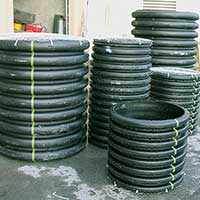

 About Theme Parks, Zoos & Tropical Design
About Theme Parks, Zoos & Tropical Design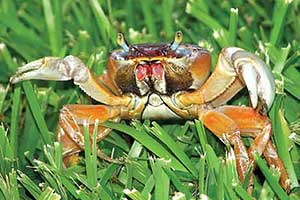 Integrated Pest Management in a Zoological Theme Park, Wing Beats the Journal of the American Mosquito Association
Integrated Pest Management in a Zoological Theme Park, Wing Beats the Journal of the American Mosquito Association The Environmental Lawn
The Environmental Lawn Design with Integrated Pest Management
Design with Integrated Pest Management Creating Islands in Aquatic Ecosystems
Creating Islands in Aquatic Ecosystems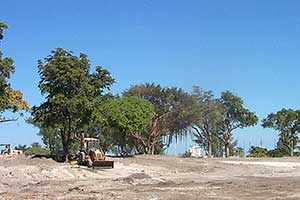 Building a New Jungle - Contouring the Site and Creating a Tree Canopy
Building a New Jungle - Contouring the Site and Creating a Tree Canopy Watson Island - Remaking History
Watson Island - Remaking History The Gardens at Parrot Jungle Island, The First Year
The Gardens at Parrot Jungle Island, The First Year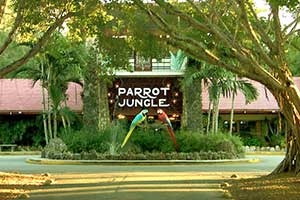 Parrot Jungle & Gardens
Parrot Jungle & Gardens